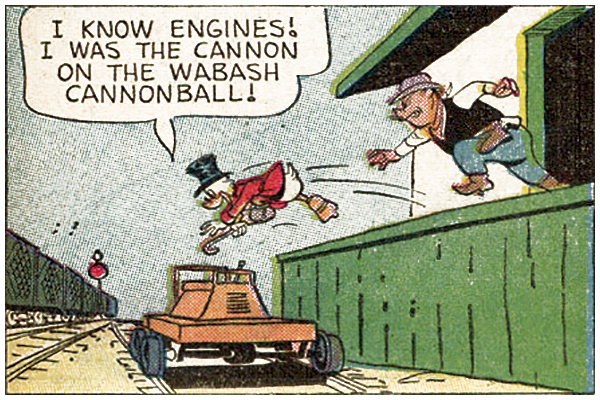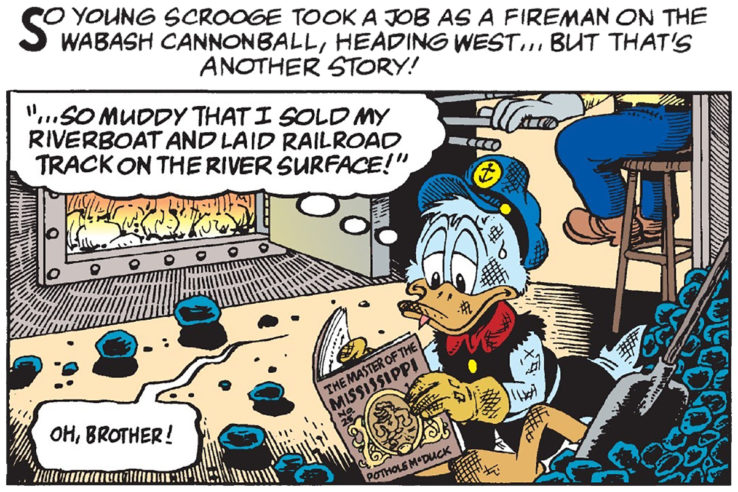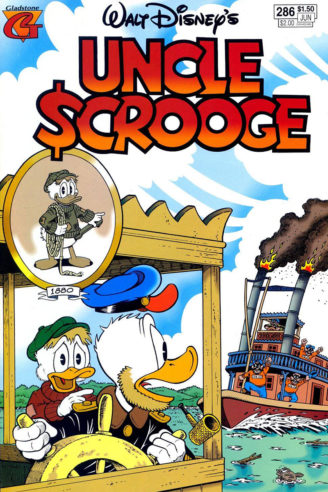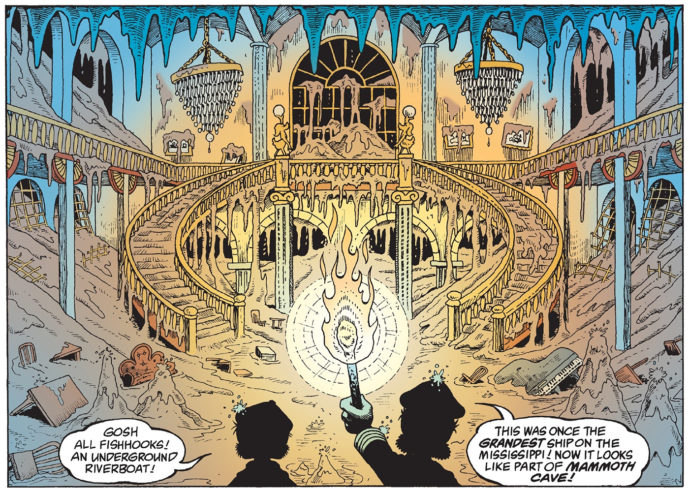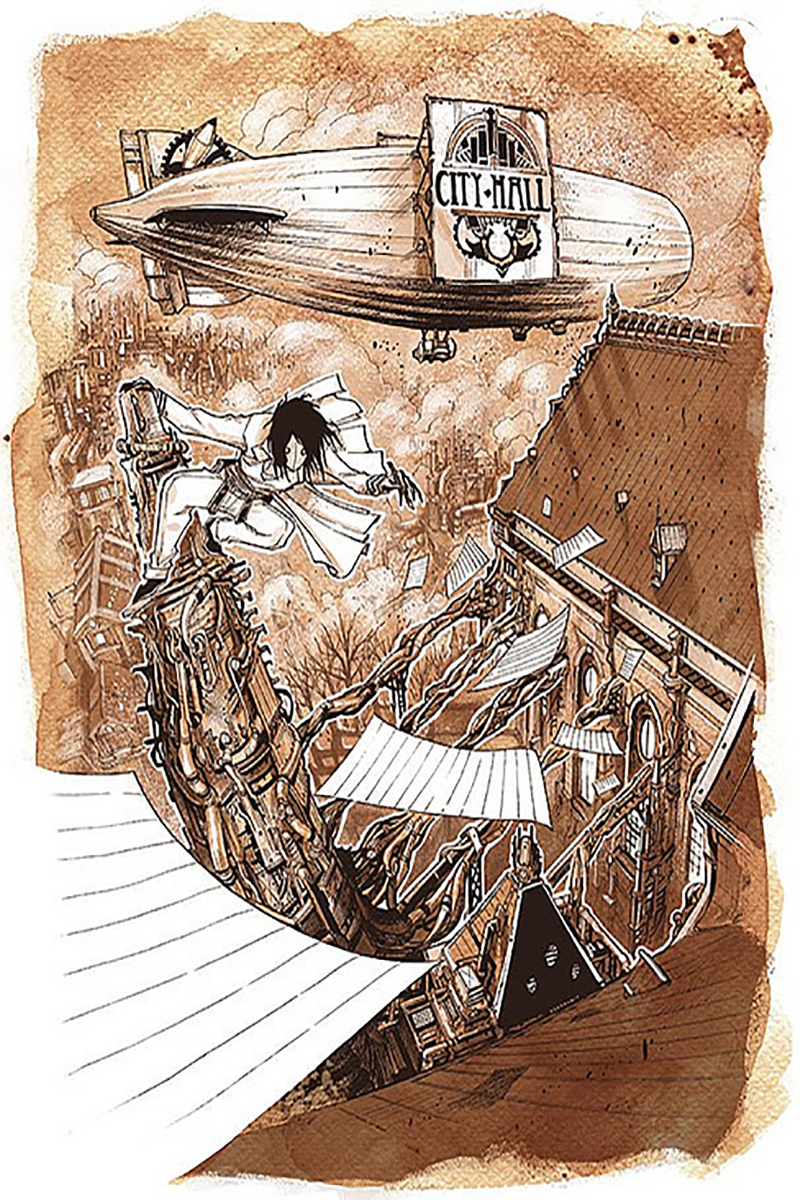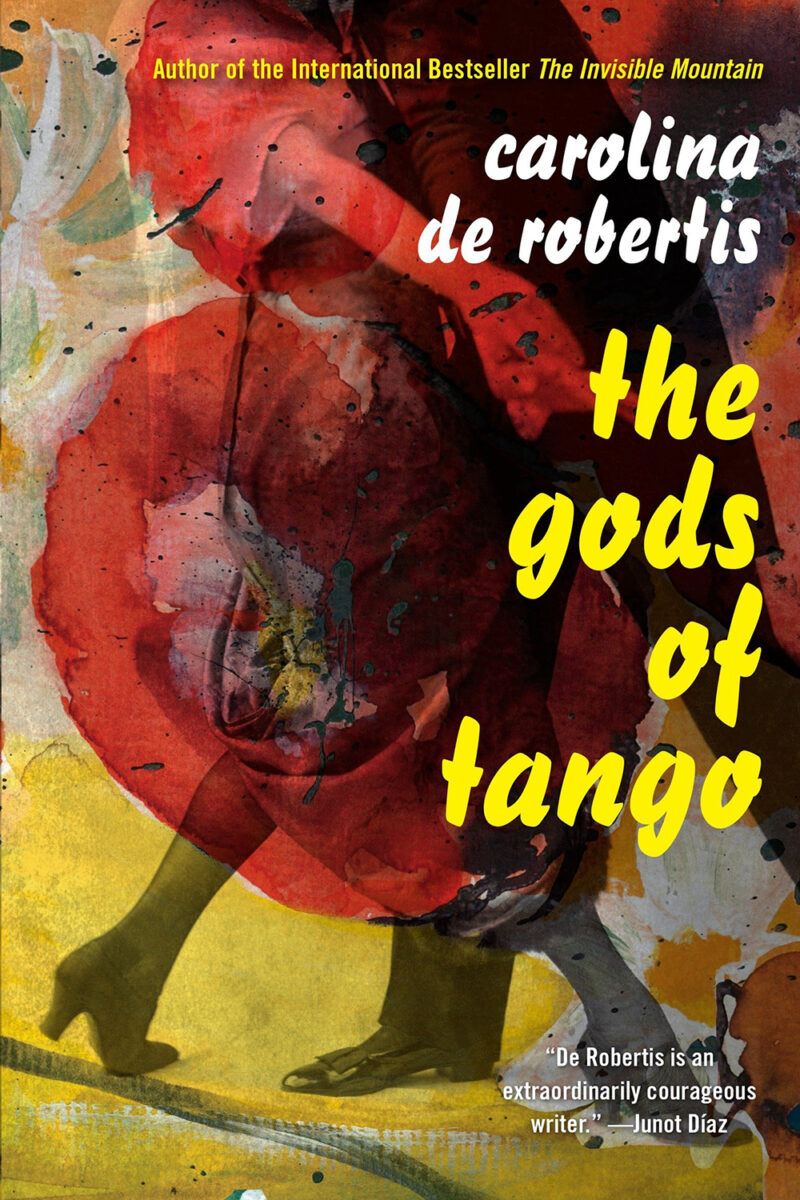The Master of the Mississippi (1992) is the beginning of Scrooge’s American adventure.
Having worked as a cabin boy for passage across the Atlantic, the 13 year-old lad from Scotland finds his Uncle Angus “Pothole” McDuck — who also sought his fortune in the New World — down on his luck in Louisville, Kentucky. But Pothole wins a steamboat, the Dilly Dollar, in a poker match and hires his nephew as deckhand, introducing him to both a lifelong ally — Ratchet Gearloose, the grandfather of Duckburg’s eccentric inventor Gyro — and lifelong enemies: the criminal Beagle Boys.
Carl Barks, Keno Don Rosa’s inspiration, had referenced Scrooge’s Mississippi River days in three stories.
In “The Great Steamboat Race,” first published in Uncle Scrooge 11 (November-September 1955), Horseshoe Hogg challenges Scrooge to complete a riverboat race their respective uncles, Porker and Pothole, left unfinished in 1870. The Master of the Mississippi takes place ten years after the original contest, but in it Porker and Pothole are again at each others’ throats.
The 1870 Porker-Pothole race was almost certainly inspired by an actual steamboat race that took place that year between the Natchez VII, the most famous of its kind, and the paddle steamer Robert E. Lee. The Lee unexpectedly won and the contest was immortalized in paintings and stories. Mark Twain, who piloted steamboats as a young man, wrote about it in Life on the Mississippi (1883). Rosa borrowed all of Porthole’s wisecracks about how muddy the Mississippi is from Twain.
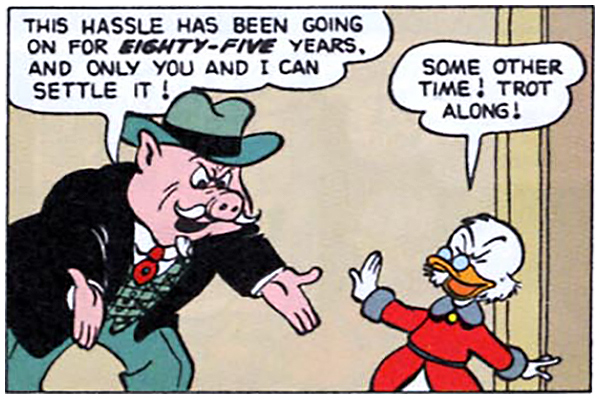
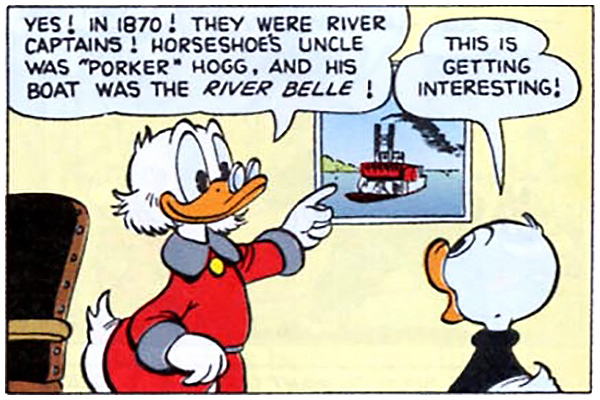
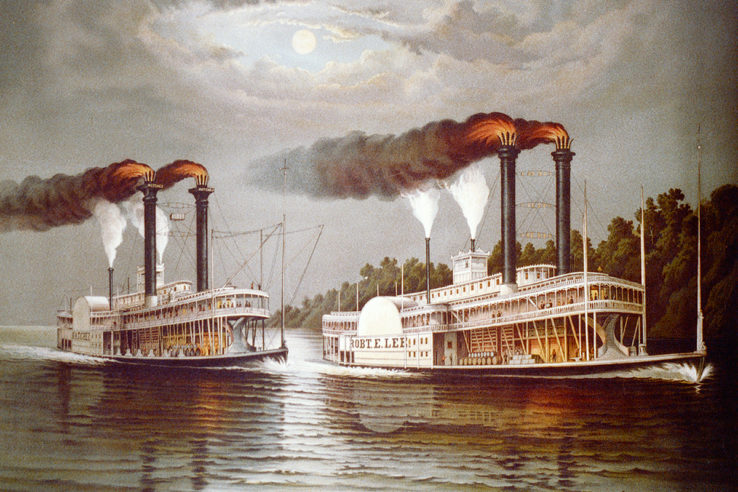
The other major source was the only tale of Scrooge’s youth Barks himself ever told: “The Fantastic River Race,” first published in the 1957 special Uncle Scrooge Goes to Disneyland. It shows Scrooge as skipper of the Dilly Dollar with Gearloose as his engineer and Blackheart Beagle and his sons captaining a rival steamboat. Rosa integrates this story in The Master of the Mississippi and faithfully reproduces the Billy Dollar Barks drew 35 years earlier.
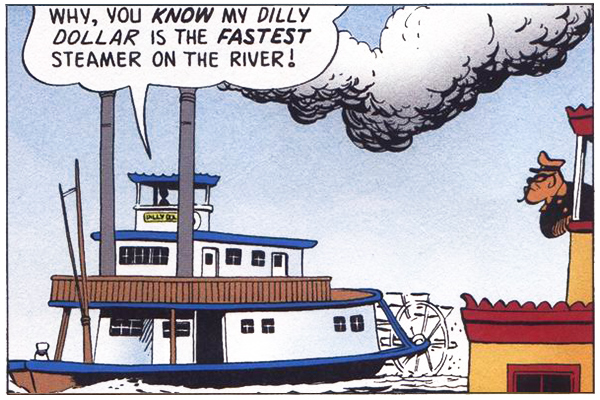
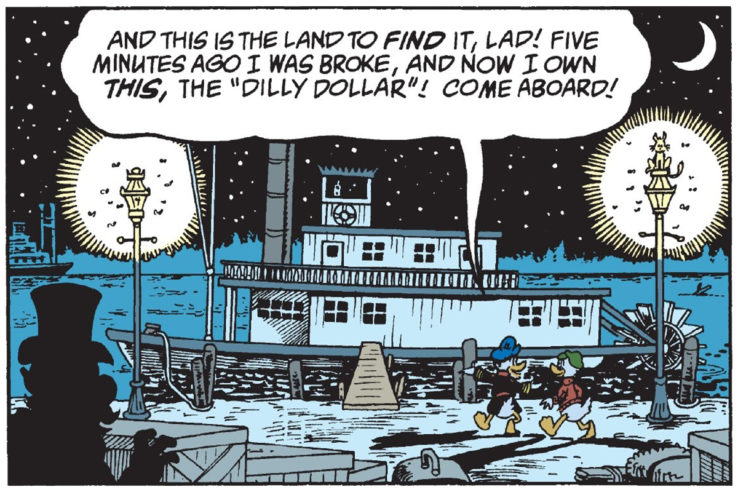
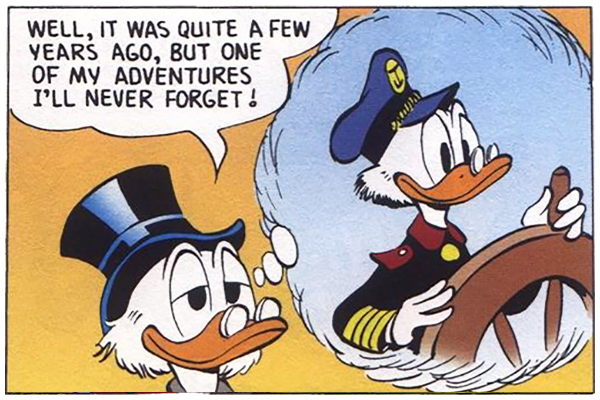
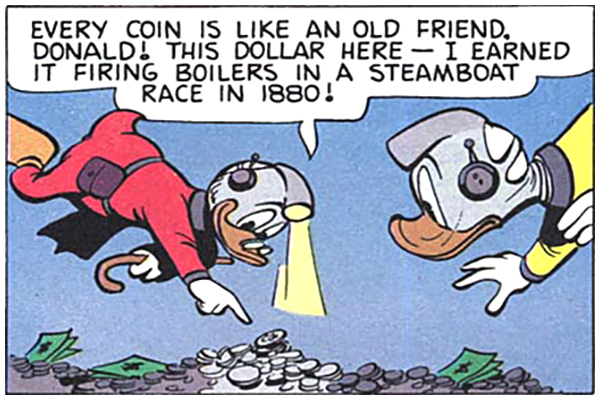
Finally, Scrooge mentions in “The Hall of the Mermaid Queen,” first published in Uncle Scrooge 68 (March 1967), that he earned a dollar during a riverboat race in 1880 — the very race depicted in The Master of the Mississippi!
Rosa didn’t set the story in Louisville just because he happened to live there. As he writes in behind-the-scenes notes for Volume 4 of Uncle Scrooge and Donald Duck: The Don Rosa Library (2015), his hometown was one of the main ports in the Mississippi River System in 1880:
Louisville is the site of the Falls of the Ohio River, which created a barrier to river traffic: the only such feature in the Mississippi system.
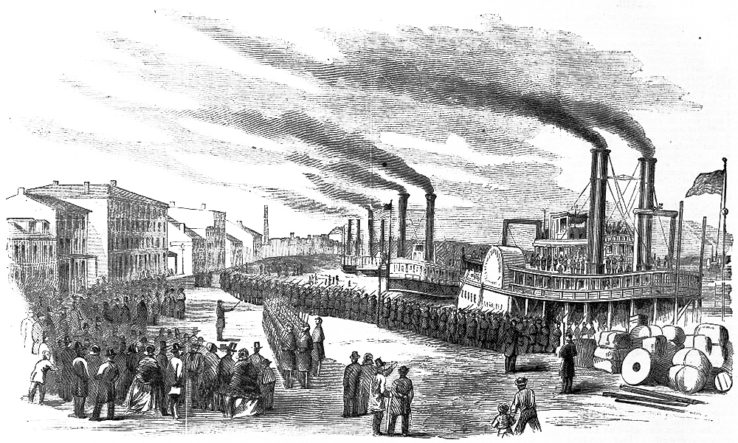
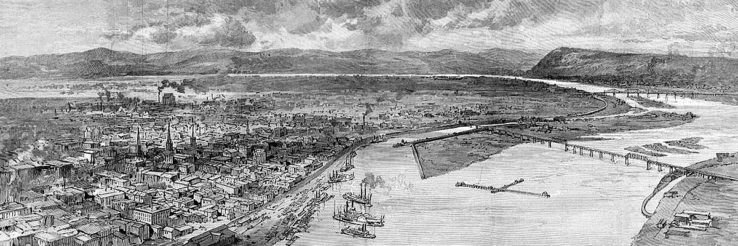
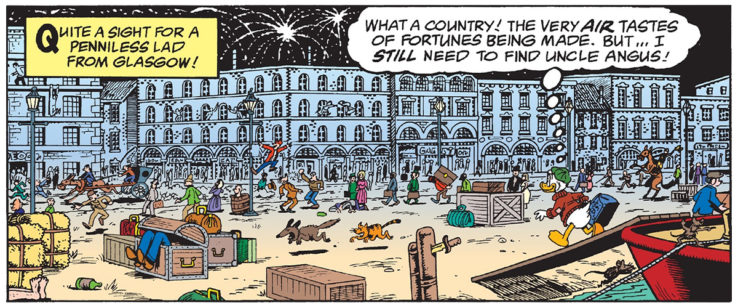
Rosa felt the waterfalls would add “an authentic and unique danger” to the story.
But I must confess to one inaccuracy — the so-called “Falls” are actually a vast series of whitewater rapids, not a single sharp plummet as I show in my story.
The city of Louisville sprung up around the need to portage cargo around the rapids. Although it was a lucrative business for the town, merchants upriver, in cities like Cincinnati and Pittsburgh, disliked the expense and hassle. A company was chartered in 1825 to dig a canal, which took eight years. It was a tremendous success. Increased demand for Southern cotton from the Northern United States caused traffic to nearly double between 1834 and 1839.
The federal government gradually bought out private investors and assumed full ownership of the canal in 1855. It installed two new locks in 1872 and abolished tolls in 1880.
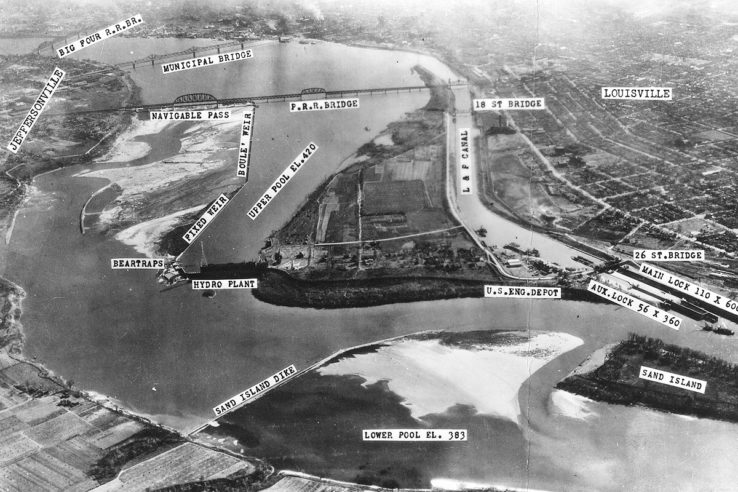
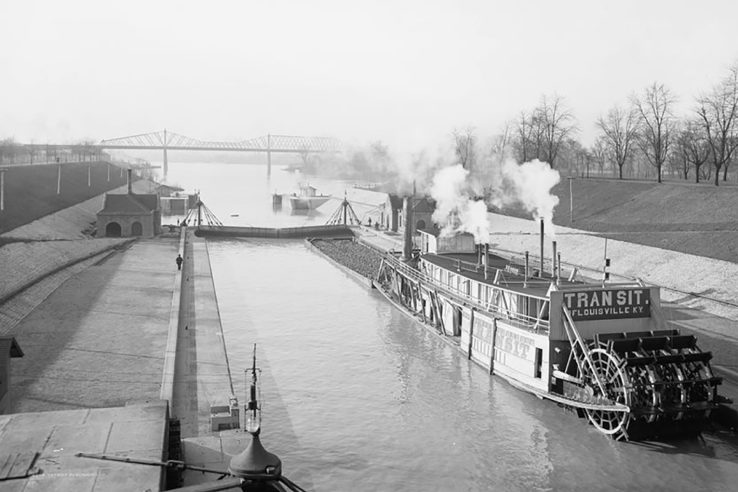
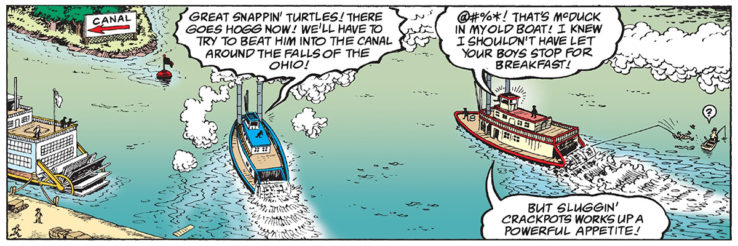
The Galt House in which Scrooge finds his uncle in the beginning of the story existed. Indeed, it still does — although today’s Galt House Hotel is the third to carry the name.
The original hotel was built in 1835 and burned down in 1865. Union General Jefferson C. Davis famously shot his superior, General William “Bull” Nelson, in the hotel during the Civil War after a dispute over strategy.
The second hotel opened in 1869 and was for a while the center of social life in Louisville. It closed in 1919, when business had moved away from the riverfront to the Broadway district. The building was demolished in 1921.
Determined to revive the waterfront, local developer Al J. Schneider built a third version of Galt House in 1972, which still stands today.
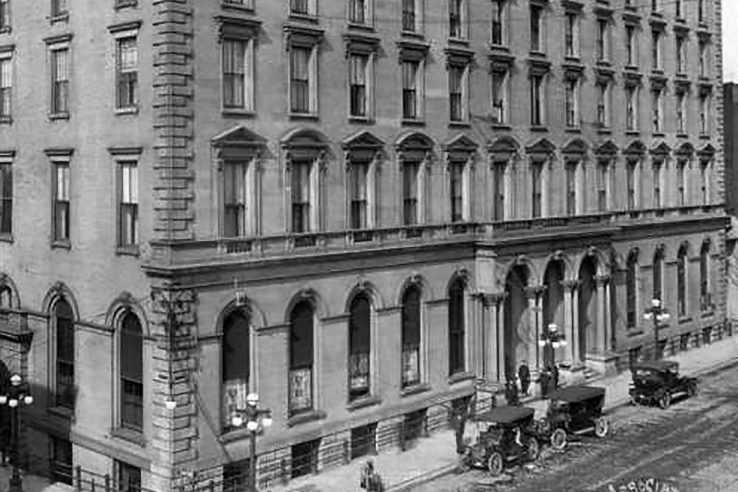

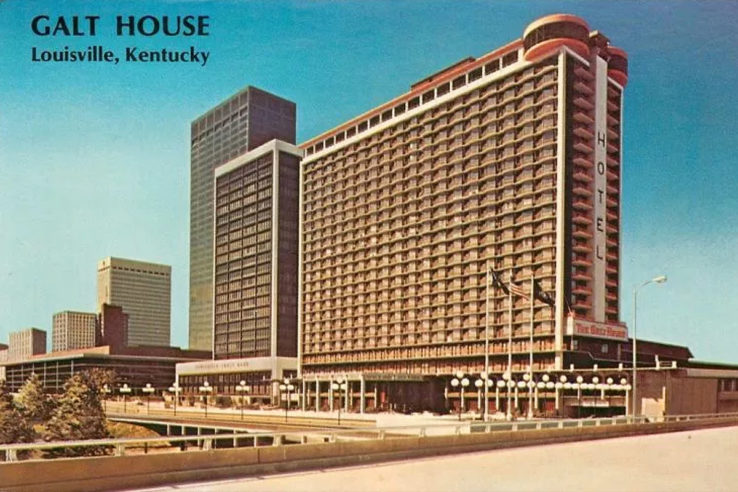
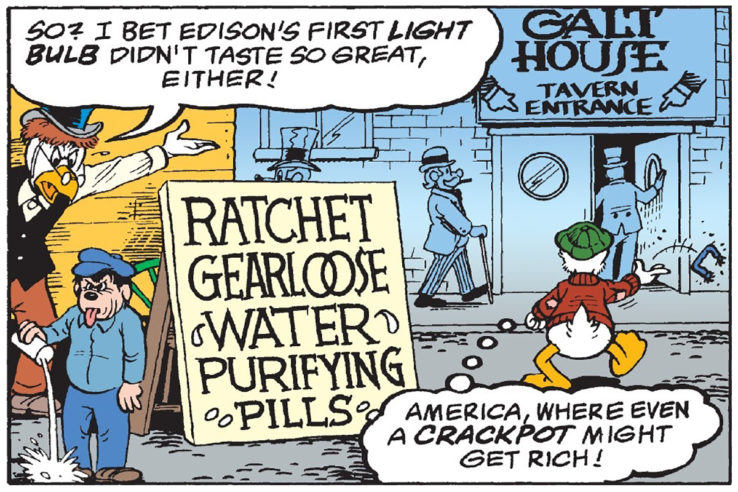
The legend of the Drennan Whyte is real too, although it is doubtful the ship was. According to the story, she was carrying $100,000 in gold (some $3 million in today’s money) on an upriver trip in the autumn of 1850 when she exploded and sank.
According to the same legend, a down-on-his-luck farmer named Ancil Fortune, whose father had led one of the attempted and failed salvages of the Drennan Whyte years earlier, found the wreck while digging a well for his cattle on land near the riverbank. The river had shifted in the intervening years. Whereas once the Drennan Whyte had been buried at the bottom of the river, now it was buried under farmland.
Rosa tells the story as it was told for decades, including (possibly) an appearance by Ancil. (The farmer under whose land the Drennan Whyte is found is unnamed.) Except here, of course, it are Angus and Scrooge who discover the long-lost riverboat.
By the time Scrooge takes over as captain of the Dilly Doller, the golden age of the Mississippi steamboat had already come to an end. Railroads were expanding across the country and gauges were being harmonized, so cars could travel from Chicago to the South without needing to be reloaded. Boats still hauled supplies like coal, iron ore and salt, but passengers and higher-end products were increasingly ferried by train.
At the end of The Master of the Mississippi, Scrooge takes a job as fireman on the Wabash Cannonball, just like Barks wrote he did in “The Cattle King,” first published in Uncle Scrooge 69 (May 1967). There never was a train called Wabash Cannonball, but it is the title of an American folk song about a scenic train journey.
